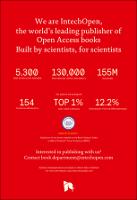Chapter Lake La Salada de Chiprana (NE Spain), an Example of an Athalassic Salt Lake in a Cultural Landscape
| dc.contributor.author | De Wit, Rutger | |
| dc.date.accessioned | 2021-06-02T10:08:17Z | |
| dc.date.available | 2021-06-02T10:08:17Z | |
| dc.date.issued | 2016 | |
| dc.identifier | ONIX_20210602_10.5772/64443_282 | |
| dc.identifier.uri | https://library.oapen.org/handle/20.500.12657/49168 | |
| dc.description.abstract | On a global scale, athalassic inland salt lakes are abundant, albeit restricted to semiarid and arid climates. La Salada de Chiprana is unique in Western Europe, because it is a permanent and relatively deep (up to 5.6 m) hypersaline lake (40–90 g total dissolved salt L–1) since 1700 AD. It forms part of a cultural landscape, which imposes a challenge for management. The aim of this paper is to describe the specific microbial biota and how they interacted with both animals and plant species during the last 25 years. The deeper parts regularly showed salinity stratification with an anoxic sulfide-rich hypolimnion and a bloom of green sulfur bacteria (Prosthecochloris aestuarii and Chlorobium vibrioforme) at the pycnocline. Despite highly eutrophic conditions, often the top water layer is transparent due to top-down control of phytoplankton populations by the brine shrimp, Artemia parthenogenetica. This allows for the development of submerged aquatic vegetation of the endemic foxtail stonewort Lamprothamnium papulosum var. papulosum f. aragonense, and microbial mat communities build by the cyanobacterium Coleofasciculus (Microcoleus) chthonoplastes coexisting with green filamentous nonsulfur bacteria (Chloroflexaceae). The microbial mats show photosynthetically induced precipitation of high-Mg calcite, which by incorporating viruses represents a mechanism for their fossilization. | |
| dc.language | English | |
| dc.subject.classification | bic Book Industry Communication::R Earth sciences, geography, environment, planning::RB Earth sciences::RBK Hydrology & the hydrosphere::RBKF Limnology (freshwater) | |
| dc.subject.other | microbial mat, multiple stable states, regime shift, charophyta, cyanobacteria, Coleofasciculus (Microcoleus) chthonoplastes, Chloroflexaceae | |
| dc.title | Chapter Lake La Salada de Chiprana (NE Spain), an Example of an Athalassic Salt Lake in a Cultural Landscape | |
| dc.type | chapter | |
| oapen.identifier.doi | 10.5772/64443 | |
| oapen.relation.isPublishedBy | 09f6769d-48ed-467d-b150-4cf2680656a1 | |
| oapen.relation.isFundedBy | H2020-SC5-2014-two-stage | |
| oapen.grant.number | 641762 | |
| oapen.grant.acronym | ECOPOTENTIAL |

